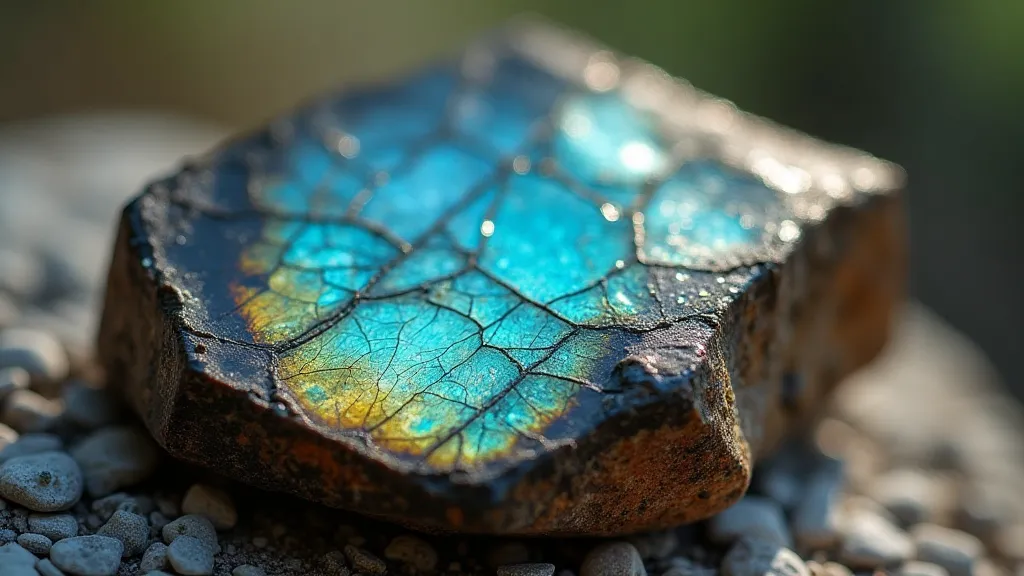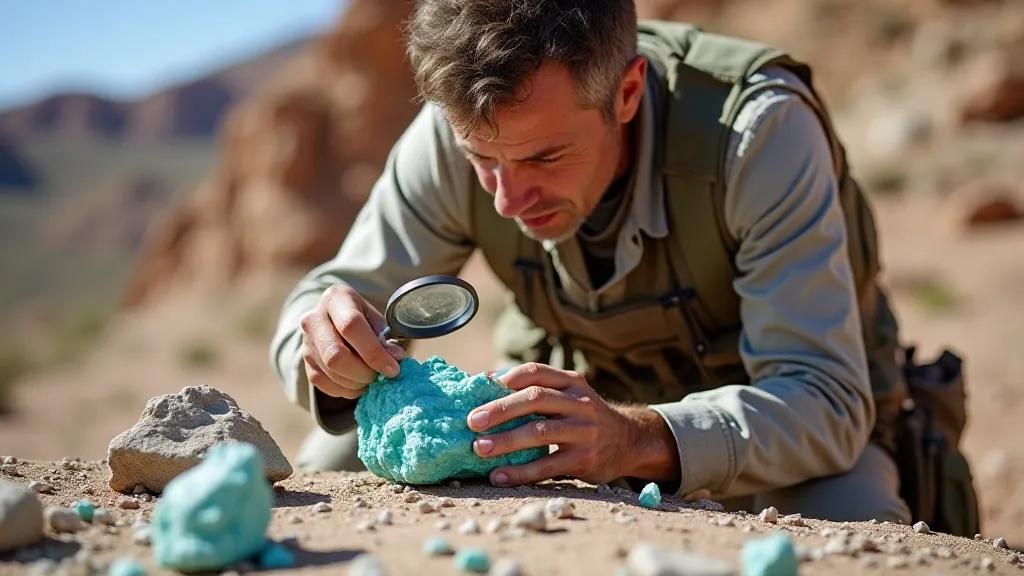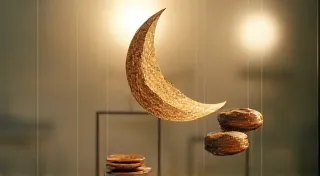Chromatic Whispers: Deciphering the Language of Mineral Colors
There's a quiet beauty in the world, a resonance felt more than heard, a language spoken not in words but in hues. Think of an antique accordion, its bellows worn smooth by countless hands, its keys ivory-tinged with age. Each color on that accordion, from the faded gold of the nameplate to the deep mahogany of the wood, tells a story. It's a story of craftsmanship, of music, of lives intertwined. Similarly, the colors of minerals—the emerald fire of peridot, the soft blush of rose quartz, the deep indigo of lapis lazuli—aren’t arbitrary. They’re chromatic whispers, subtle and profound, speaking volumes about the earth’s history and chemical artistry.

The Science of Color: More Than Meets the Eye
Most people associate color with beauty, and it undeniably *is* beautiful. But to truly appreciate a mineral’s color, we need to understand its origin. The color we perceive isn’t simply “there.” It's a result of complex interactions between light and the mineral’s composition.
The simplest explanation involves elemental impurities. Imagine a perfectly clear quartz crystal – it would be colorless. Now, introduce tiny amounts of iron. These iron ions absorb specific wavelengths of light, and the wavelengths that aren't absorbed are what we *see* as color. A few parts per million of iron can create the lovely yellow-green hues of citrine. Similarly, manganese creates the violet shades in amethyst – both varieties of quartz, altered by trace elements. The intricate process of how gemstones are formed, and how artisans work with them, can be quite fascinating, much like the alchemy practiced by gemsmiths, who transform rough stones into exquisite pieces.
But it's not just about impurities. Charge transfer, where electrons jump between metal ions, can produce vibrant colors. Lapis lazuli, that iconic deep blue, owes its color to the interaction between sulfur and iron within its complex structure. Malachite, a vibrant green copper carbonate, is another example, where the copper ions are the key players.
Color centers, defects in the crystal lattice that trap electrons, also influence color. These centers are often created by natural radiation damage and can dramatically alter the perceived color. Smoky quartz, a variety of clear quartz, gets its smoky color from electrons trapped in structural defects. The intensity of the smoke depends on the level of radiation exposure. It's remarkable to consider that within a single rock, you can often read a whole narrative about the planet's history – a concept explored in detail in our article, Geological Palimpsest: Reading the Layers of Earth’s History in a Single Rock.
Beyond the Spectrum: Physical Phenomena
Sometimes, color isn't directly tied to chemical composition. Physical phenomena like iridescence and pleochroism contribute to the visual experience. Iridescence, think of opal or labradorite, is caused by light scattering off microscopic layers within the mineral. Pleochroism, exhibited by minerals like tourmaline, means the mineral appears to change color when viewed from different angles. This effect is caused by the way light interacts with the mineral's crystal structure.

The Emotional Language of Color
For millennia, humans have assigned symbolic meaning to colors. Red often represents passion and energy, blue evokes calmness and serenity, green symbolizes growth and harmony, and so on. These associations influence our perception and appreciation of minerals. A vibrant ruby isn't just a beautiful gem; it’s a symbol of vitality and love. A calming piece of blue azurite can offer a sense of peace and tranquility.
Consider the resurgence of antique accordions. It's not just about the music they produce, although that's a huge part of it. It's about the connection to the past, the tactile experience of the aged wood and worn keys, the sense of history held within those bellows. The colors, the very patina of age, contribute to that emotional resonance. Similarly, a collector drawn to vibrant malachite might be seeking more than just a beautiful stone; they may be drawn to a sense of abundance and growth. The seemingly contradictory nature of beauty arising from apparent imperfections – a concept often explored in nature, especially in geological formations – echoes the philosophy of embracing change, as seen in materials like serpentine, described in more detail in our article, Serpentine's Dance: Embracing Change and Finding Beauty in Imperfection.
Connecting Geology to Craftsmanship: Restoration and Collecting
Understanding the origin of color isn't just for scientists and serious collectors. It’s valuable for anyone appreciating the beauty of minerals or considering collecting or restoring antique instruments like accordions.
For collectors, knowing that a vibrant green “emerald” is actually a chromium-rich variety of green beryl adds a layer of appreciation. Knowing how certain minerals form – for example, how geodes are created by mineral-rich water seeping into cavities – provides a deeper connection to the earth’s processes. The dark beauty found within materials like obsidian, often viewed as a portal to introspection and clarity, presents a different yet equally profound perspective on the earth's artistry – an exploration we delve into in our article, The Obsidian Mirror: Confronting Shadows and Finding Clarity in the Dark Stone.
Restorers of antique instruments can leverage this knowledge. Understanding how wood discoloration occurs – often due to oxidation and exposure to light – allows for appropriate cleaning and preservation techniques. Knowing that certain finishes might alter the color of the wood informs the selection of compatible restoration materials. It’s about preserving the story, not erasing the past. The processes involved often require a level of patience and precision, demanding a deep understanding of material science and artistry – a testament to the enduring connection between geology and craftsmanship.

Expanding on Color: Beyond the Visible Spectrum
While the visible spectrum offers a stunning array of colors, it represents only a fraction of the story. Many minerals exhibit luminescence, fluorescing under ultraviolet light, revealing hidden hues invisible to the naked eye. Others display phosphorescence, storing energy and slowly releasing it as a gentle glow. These phenomena extend the palette of mineral colors far beyond our everyday perception, offering a glimpse into the fascinating interactions between energy and matter at the atomic level. Exploring these less-known aspects further highlights the complexity and wonder inherent in the earth's artistic creations.
The Human Element: Cultural Significance and Folklore
Throughout history, different cultures have attributed unique symbolic meanings to minerals, embedding them within folklore, mythology, and religious practices. For example, lapis lazuli, prized for its deep blue hue, was highly valued in ancient Egypt, where it was associated with the heavens and divinity. Turquoise, with its calming blue-green color, holds significant cultural importance in Native American traditions, symbolizing protection and healing. These cultural associations enrich our appreciation of minerals, transforming them from mere geological specimens into powerful symbols of human beliefs and aspirations. The human relationship with minerals extends far beyond scientific understanding, intertwining with artistic expression, spiritual practices, and cultural narratives.
A Chromatic Conversation
The language of mineral colors is a nuanced and fascinating conversation between chemistry, physics, and human perception. It’s a conversation that invites us to look beyond the surface and appreciate the intricate beauty and profound stories held within the earth’s treasures and the crafted objects that hold echoes of human history. Just as the colors of an antique accordion whisper tales of music and time, the colors of minerals speak volumes about the earth’s enduring artistry. Take a moment to listen; you might be surprised by what you hear.





